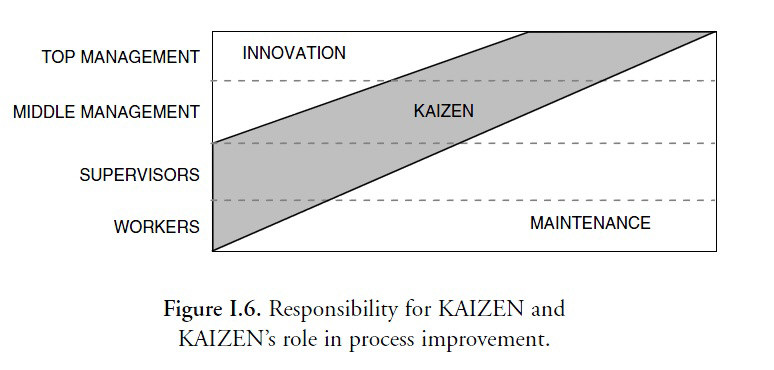Tools
7MP Management and Planning Tools
8QC Traditional Quality Control Tools
Failure Mode, Effects, and Criticality Analysis
Maintainability and Availability
Process Decision Program Charts
KAIZEN
An excerpt on KAIZEN continuous improvement from The Handbook for Quality Management (2013, McGraw-Hill) by Paul Keller and Thomas Pyzdek
(Note: *KAIZENTM is a trademark of the KAIZEN Institute, Ltd.)
KAIZEN is a philosophy of continuous improvement, a belief that all aspects of life should be constantly improved. In Japan, where the concept originated, KAIZEN applies to all aspects of life, not just the workplace. In America the term is usually applied to work processes.
The KAIZEN approach focuses attention on ongoing incremental improvement that involves all stakeholders. Over time these small improvements produce changes every bit as dramatic as the big project approach. KAIZEN does not concern itself with changing fundamental systems, but seeks to optimize existing systems.
All employees in an organization have responsibilities for two aspects of quality: process improvement and process control. Control involves taking action on deviations to maintain a given process state. In the absence of signals indicating that the process has gone astray, control is achieved by adhering to established standard operating procedures (SOPs). In contrast, improvement requires experimentally modifying the process to produce better results through innovation and KAIZEN. When an improvement has been identified, the SOPs are changed to reflect the new way of doing things. Imai (1986) illustrates the job responsibilities as shown in Figure 3.1. (From Imai, M. KAIZEN: The Key to Japans Competitive Success. Copyright © 1986 by the KAIZEN Institute, Ltd.)

The figure illustrates both the shared responsibility and the limited role of KAIZEN in excluding radical innovations (sometimes referred to as re-engineering). More detailed responsibilities for KAIZEN are provided in Table 3.1.
|
Table 3.1. Hierarchy of KAIZEN involvement. From Imai, M. KAIZEN: The Key to Japans Competitive Success, page 8. Copyright © 1986 by the KAIZEN Institute, Ltd. |
|
|
POSITION |
RESPONSIBILITIES |
|
Top management |
|
|
Middle management and staff |
|
|
Supervisors |
|
|
Workers |
|
Learn more about the Quality Improvement principles and tools for process excellence in Six Sigma Demystified (2011, McGraw-Hill) by Paul Keller, or his online Green Belt certification course ($499).





